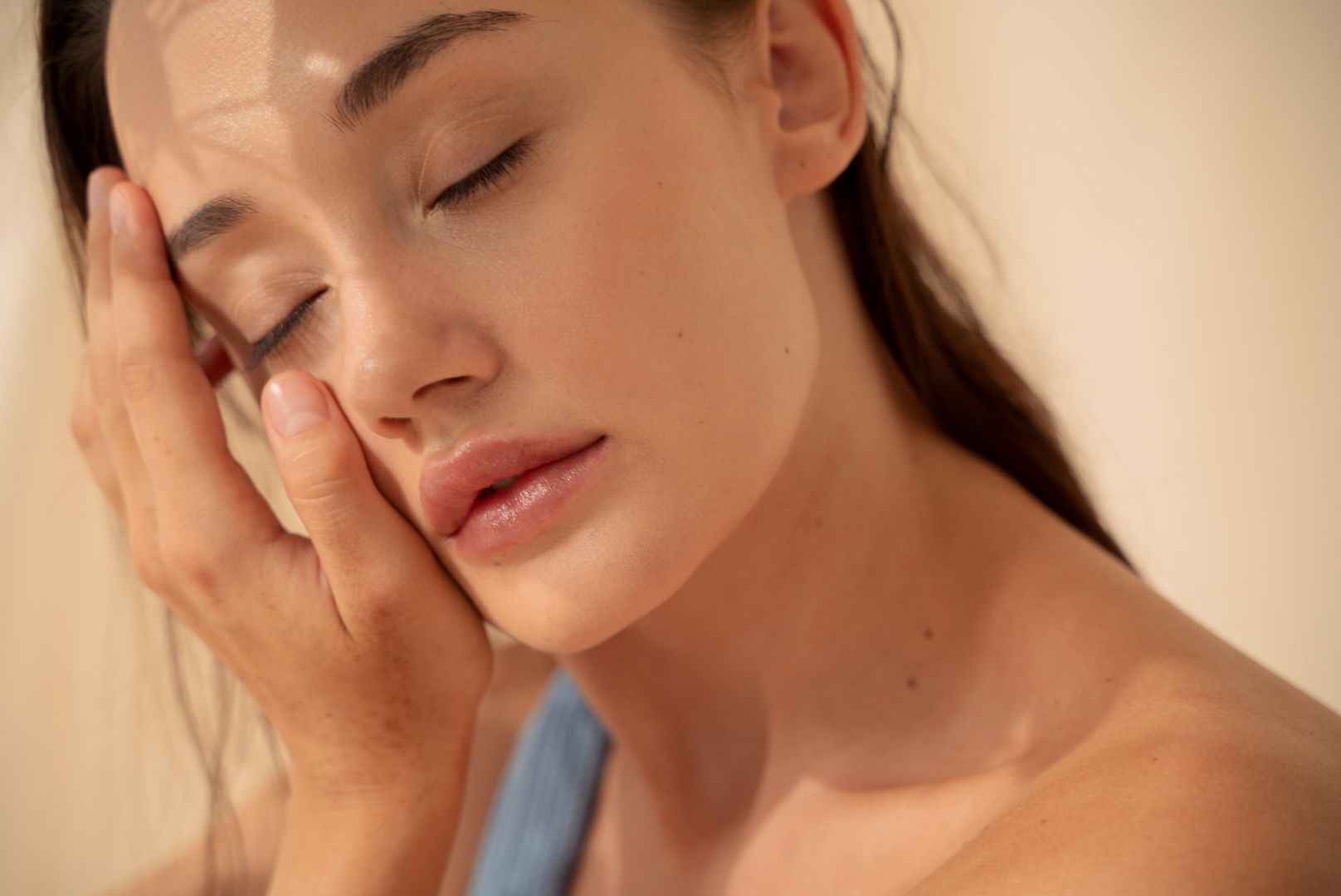

If you think you know your skin type only for it to change, you may wonder what caused it. Having dry skin suddenly change to oily or suddenly having oily and dry skin at the same time can turn anyone's carefully curated skincare routine into a minefield. After all, what works for dry skin can sometimes make oily skin worse, and vice versa. To help figure out what causes skin changes and how to address them, keep reading...
How Your Skin Type Can Change
Your skin type can change over time due to environmental factors, age, hormones, and other health-related issues. Yes, your skin can transform from oily to dry, combination, or sensitive, but it doesn't just happen on its own. Factors like climate can cause minor or major adjustments to your skin type.
Similar to changes in your environment, shifts in your medications, stress levels, and diet can affect how much or how little oil your skin produces. Acne is inflammation, which can be exacerbated by hormones released during stress. Acne caused by stress is usually accompanied by redness, itching, and an increased number of blackheads and whiteheads.
If it's Oilier, it’s Likely Hormonal
Sometimes, your skin can be dry and start suddenly producing more oil. This likely means certain hormones fluctuate: Skin changes can be exacerbated by fluctuations in our hormones. Changes in hormones such as cortisol and adrenal androgens can cause changes to the sebaceous glands which can cause an increase in sebum production, causing the skin to become oily.
You Can Have Oily and Dry Skin at the Same Time
Having dry and oily skin at the same time is referred to as combination skin. For example, many people can have an oily T-zone while the rest of the face is dry. Another way you can have oily and dry skin simultaneously is if you have dehydrated, oily skin.
It's important to hydrate throughout the day with water to keep skin naturally hydrated. Also, using products that add hydration to the skin.
Your Skincare Might Be Doing More Harm Than Good
Just because you've used the same products for years with success doesn't mean you'll always have the same results—which often happens with skin care. The products you've used for years can start to yield very little or no improvement. When this happens, it's time to reevaluate your skincare and make the necessary adjustments. It's certainly helpful to change up your routine because your skin evolves.
In fact, your skincare could be hurting your skin. Using the wrong products for your skin type can have adverse effects. The wrong skincare regimen can also throw off your skin's pH balance.
If you are oily and use products that cause your skin to become dry, then that will result in breakouts. The same concept applies to someone who has dry skin. In other words, using a skincare routine specifically designed for dry skin works while your skin is dry. But if your skin becomes oilier, this routine will likely cause clogged pores and subsequent breakouts.
You can ramp up your skin care routine by adding an exfoliant after cleansing. This is a key step in stimulating cell turnover to maintain a healthy complexion. You should also add a toner to help rebalance and change your moisturizer to something more lightweight. This will help it to penetrate deeper into your skin to repair and replenish.
But again, it all depends on how your skin reacts. Gentle exfoliation should be included in your routine, but it's crucial to exfoliate no more than 2-3 times a week. Excessive exfoliation leads to stripped, dry skin, and in certain cases, the skin can try and overcompensate by sebaceous glands trying to work harder to produce more sebum, thus, in turn, becoming oily again.
Your Skin May Change Again
Your skin becoming oilier once doesn't mean it won't revert again. A host of factors influences our skin type, and it's not always easy to predict what it's going to do. You need to learn what it needs now while it's in flux. If your skin type changes, it's time to explore and learn what products and treatment works best for your skin as it goes through the transition. The first step is putting together a skin care routine. It's important to know what products to use and the order in which they should be used.
You Can Keep Adjusting Your Routine to Compensate
Of course, if you suspect your skincare routine may be doing your skin more harm than good, you should see your dermatologist for recommendations on the best course of action. The most important thing is that you listen to your skin. Ensure you’re adapting your skincare routine to support whatever your skin needs now—not what it needed before and not what you want it to need in the future.
Wild Naturals Skin Care
No matter what your skin type is, Wild Naturals Manuka Honey Cream can balance any issues your skin is having. From acne to inflammation to psoriasis to redness or dryness, our skin care line has it all. With natural ingredients and zero fragrance or harsh preservatives, your skin will thank you once you make the switch. Shop our online store today!


